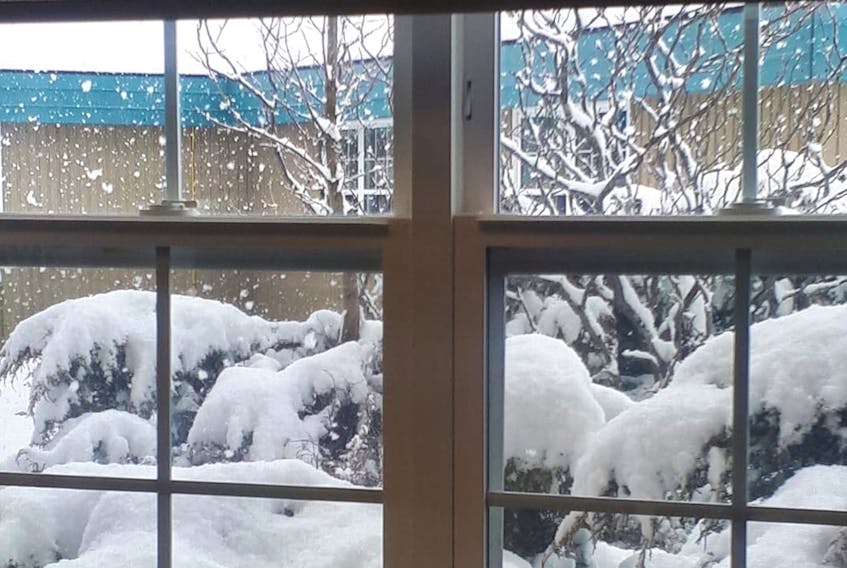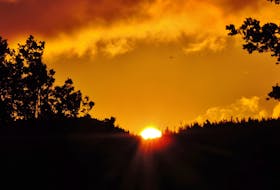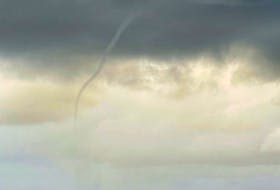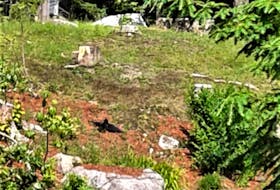Spring snow doesn’t make everybody giddy, but when I saw those giant snowflakes tumble from the sky Tuesday morning, I felt like a kid.
I know I was not the only one; many of you commented on the dinner-plate-sized snowflakes that decorated parts of our region. Before the snow had time to melt, this email arrived from Basil Mattie.
“Hi, Cindy. What determines the size of snowflakes? Had the biggest flakes that I have ever seen, in Tracadie N.S. today.”
Let’s start with how snowflakes form.
Snowflakes are made of ice crystals that form when water molecules in a cloud pass directly from water vapour to solid ice, skipping over the liquid phase.
As these ice crystals fall and swirl through the clouds, they form larger flakes by continuing to grow, clumping together, gathering freezing water droplets, or all of the above. When we think of snowflakes, we usually picture symmetrical, lacelike crystals but most snowflakes are not nearly as tidy as that. Because snowflakes are made up of many individual ice crystals as well as frozen water droplets that resemble fuzzy snowballs, they can be quite lumpy.
Back to Basil’s question: what determines the size of a snowflake?
It’s all about the air temperature and available moisture. When the temperature of the air mass overhead is well below freezing, the snow is termed "dry snow." Dry snow has little to no liquid within the snowflakes. During dry snow, snowflakes tend to be smaller.
In a situation in which the temperatures of a horizontal layer of the air overhead is near or just above freezing, the snowflakes will partially melt. This produces a liquid film on the snowflakes and makes it much easier for snowflakes to stick together. I guess you could say it’s the liquid – acting like a glue - that produces large snowflakes. When multiple snow crystals clump together, the snow particles they form are known in meteorological circles as aggregates or very large lumpy snowflakes.
How large can they get? It’s difficult to determine. Eyewitness accounts are the main source of information. Some have reported snowflake complexes to be the size of baseballs or larger. That being said, the largest reported snowflake was discovered by a ranch owner in Fort Keogh, Montana, in 1887: it measured 38.1 cm wide and 20 .3 cm thick!
- Want more weather information? Visit your weather page.
- Have a weather question, photo or drawing to share with Cindy Day? Email [email protected]









